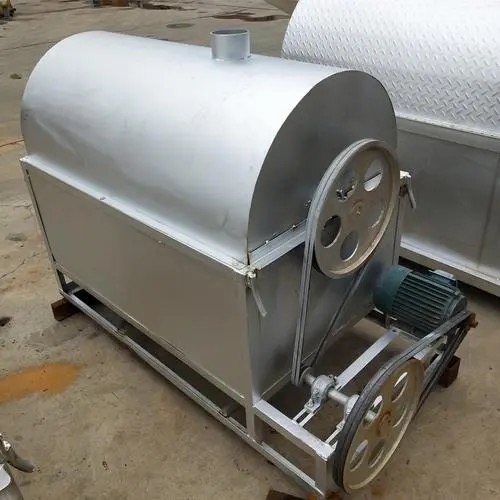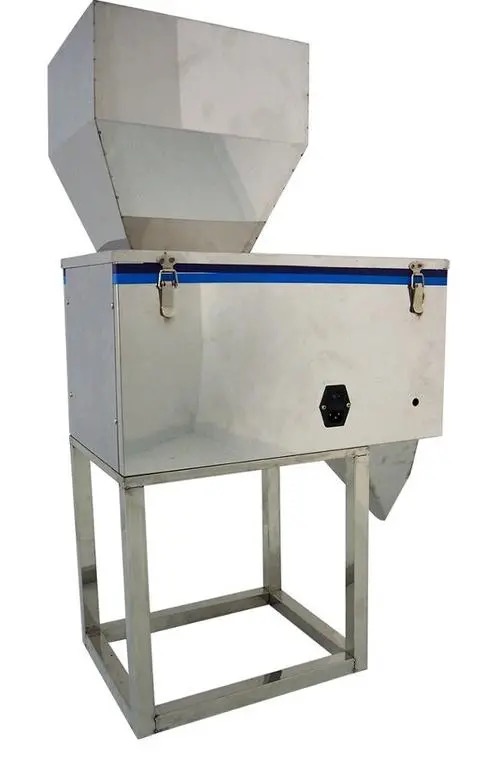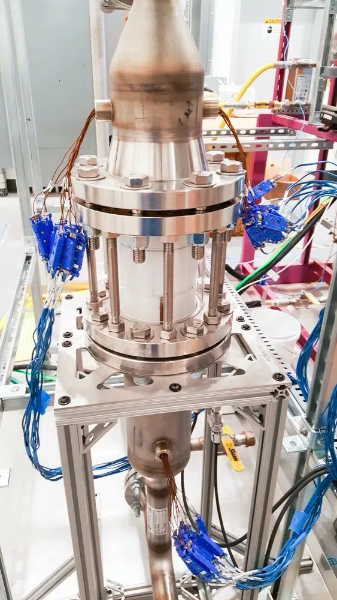
Content Menu
● Introduction to Dry Food Storage Machines
● The Evolution of Food Preservation
>> Types of Dry Food Storage Machines
● Benefits of Using Dry Food Storage Machines
>> 1. Extended Shelf Life
>> 2. Nutritional Preservation
>> 3. Space Efficiency
>> 4. Cost Savings
● Choosing the Right Dry Food Storage Machine
>> Food Dehydrators
>> Vacuum Sealers for Food Storage
>> Freeze-Dryers
● Best Practices for Using Dry Food Storage Machines
● Long-Term Food Preservation Methods
● Bulk Dry Goods Storage Solutions
● Commercial Food Drying Equipment
● Home Food Preservation Techniques
● The Future of Dry Food Storage
● Conclusion
● Frequently Asked Questions
>> 1. Q: What foods are best suited for dry storage?
>> 2. Q: How long can food last when properly stored using a dry food storage machine?
>> 3. Q: Are there any foods that shouldn't be preserved using dry food storage machines?
>> 4. Q: How do I know if my dried food has gone bad?
>> 5. Q: Can I use regular plastic bags with a vacuum sealer for food storage?
Introduction to Dry Food Storage Machines
In today's fast-paced world, efficient food storage has become more crucial than ever. Dry food storage machines have revolutionized the way we preserve our food, offering convenience, cost-effectiveness, and long-term storage solutions. These innovative devices, which include food dehydrators, vacuum sealers, and specialized containers, have become indispensable tools in both home kitchens and commercial food processing facilities.
The Evolution of Food Preservation
Food preservation has come a long way since ancient times. While traditional methods like salting, smoking, and sun-drying are still used, modern dry food storage machines have taken preservation to new heights. These machines utilize advanced technology to remove moisture from food, creating an environment inhospitable to bacteria, mold, and other microorganisms that cause spoilage.
Types of Dry Food Storage Machines
1. Food Dehydrators: These machines use controlled heat and airflow to remove moisture from foods, preserving them for extended periods.
2. Vacuum Sealers: By removing air from storage bags or containers, vacuum sealers create an oxygen-free environment that significantly extends food shelf life.
3. Freeze-Dryers: Although more expensive, freeze-dryers offer superior preservation by freezing food and then removing ice through sublimation.
4. Airtight Containers: While not machines per se, specialized airtight containers are crucial components of any dry food storage system.
Benefits of Using Dry Food Storage Machines
1. Extended Shelf Life
The primary advantage of dry food storage machines is their ability to extend the shelf life of various foods. By removing moisture and oxygen, these machines can preserve food for months or even years, depending on the method used and the type of food.
2. Nutritional Preservation
Unlike some preservation methods that can degrade nutrients, proper use of dry food storage machines helps retain most of the food's original nutritional value. This is particularly true for freeze-drying, which preserves up to 97% of the food's nutritional content.
3. Space Efficiency
Dried foods take up significantly less space than their fresh counterparts. This makes dry food storage machines ideal for those with limited storage space or those looking to store large quantities of food for emergency preparedness.
4. Cost Savings
While the initial investment in a dry food storage machine may seem substantial, the long-term savings can be significant. By allowing you to buy in bulk and preserve foods at their peak freshness, these machines can help reduce food waste and lower overall grocery costs.

Choosing the Right Dry Food Storage Machine
Selecting the appropriate dry food storage machine depends on various factors, including your specific needs, budget, and the types of food you plan to store.
Food Dehydrators
Food dehydrators are versatile machines suitable for a wide range of foods, from fruits and vegetables to meats and herbs. When choosing a food dehydrator, consider factors such as capacity, temperature control, and ease of cleaning. Some models come with additional features like timers and adjustable trays to accommodate different food sizes.
Vacuum Sealers for Food Storage
Vacuum sealers are excellent for preserving both dry and moist foods. Look for models with adjustable vacuum strength and sealing options. Some advanced vacuum sealers offer features like marinate modes and compatibility with external containers.
Freeze-Dryers
While more expensive, freeze-dryers offer superior preservation quality. They're ideal for those looking to store food long-term or preserve items that don't fare well with traditional dehydration methods. When selecting a freeze-dryer, consider factors like capacity, cycle time, and energy efficiency.
Best Practices for Using Dry Food Storage Machines
To get the most out of your dry food storage machine, follow these best practices:
1. Proper Preparation: Clean and prepare foods properly before drying or sealing. This may involve washing, slicing, or pre-treating to prevent browning.
2. Consistent Thickness: When using a food dehydrator, ensure food pieces are of uniform thickness for even drying.
3. Appropriate Temperature: Use the recommended temperature settings for different types of food to ensure safe and effective drying.
4. Proper Cooling: Allow dehydrated foods to cool completely before storing to prevent condensation.
5. Airtight Storage: Store dried foods in airtight containers or vacuum-sealed bags to maintain quality.
6. Regular Checks: Periodically inspect stored foods for any signs of moisture or spoilage.
Long-Term Food Preservation Methods
While dry food storage machines are excellent for preserving food, they're just one part of a comprehensive long-term food preservation strategy. Other methods to consider include:
1. Canning: Ideal for high-acid foods like fruits and pickles.
2. Fermentation: Great for creating probiotic-rich foods like sauerkraut and kimchi.
3. Root Cellaring: A traditional method for storing root vegetables and some fruits.
4. Freezing: Suitable for a wide range of foods, though it requires consistent power supply.
Combining these methods with dry food storage techniques can create a robust food preservation system.

Bulk Dry Goods Storage Solutions
For those looking to store large quantities of dry goods, consider investing in:
1. Food-Grade Buckets: Ideal for storing grains, legumes, and other dry goods in bulk.
2. Mylar Bags: When used with oxygen absorbers, these provide excellent long-term storage for dry foods.
3. Desiccants: These help control moisture in storage containers, further extending shelf life.
Commercial Food Drying Equipment
For businesses in the food industry, commercial-grade dry food storage machines offer higher capacity and more advanced features. These may include:
1. Continuous Belt Dehydrators: Ideal for high-volume production of dried foods.
2. Industrial Freeze-Dryers: Capable of processing large batches of food quickly and efficiently.
3. Commercial Vacuum Packaging Systems: Designed for rapid, high-volume sealing of various food products.
Home Food Preservation Techniques
While dry food storage machines are powerful tools, they can be complemented by traditional home food preservation techniques:
1. Sun-Drying: A cost-free method suitable for areas with hot, dry climates.
2. Oven-Drying: Using a regular oven on its lowest setting can be an alternative to a dedicated food dehydrator.
3. Air-Drying: Suitable for herbs and some vegetables, this method requires proper ventilation and low humidity.
The Future of Dry Food Storage
As technology advances, we can expect to see even more innovative dry food storage solutions. Future developments may include:
1. Smart Storage Systems: Internet-connected devices that monitor food quality and alert users when items need to be used or replaced.
2. More Efficient Drying Technologies: Methods that preserve food quality while using less energy.
3. Biodegradable Packaging: Environmentally friendly storage solutions that maintain food quality without harming the planet.
Conclusion
Dry food storage machines have transformed the way we preserve food, offering efficient, cost-effective solutions for both home users and businesses. By understanding the various types of machines available and following best practices for their use, you can significantly extend the shelf life of your food while maintaining its nutritional value and flavor. Whether you're preparing for emergencies, reducing food waste, or simply looking to save money on groceries, investing in a quality dry food storage machine can be a game-changer for your food preservation efforts.

Frequently Asked Questions
1. Q: What foods are best suited for dry storage?
A: Foods with low moisture content are ideal for dry storage. This includes grains, legumes, nuts, dried fruits, and properly dehydrated vegetables and meats.
2. Q: How long can food last when properly stored using a dry food storage machine?
A: The shelf life varies depending on the food and storage method. Properly dehydrated foods can last from 6 months to several years, while freeze-dried foods can last up to 25 years or more when stored correctly.
3. Q: Are there any foods that shouldn't be preserved using dry food storage machines?
A: Foods with high fat content don't store well long-term as fats can go rancid. Eggs and dairy products are also challenging to preserve through drying methods alone.
4. Q: How do I know if my dried food has gone bad?
A: Signs of spoilage include off odors, visible mold, changes in color or texture, and any signs of moisture or condensation in the storage container.
5. Q: Can I use regular plastic bags with a vacuum sealer for food storage?
A: It's best to use bags specifically designed for vacuum sealing. These bags are thicker and provide a better barrier against air and moisture compared to regular plastic bags.












